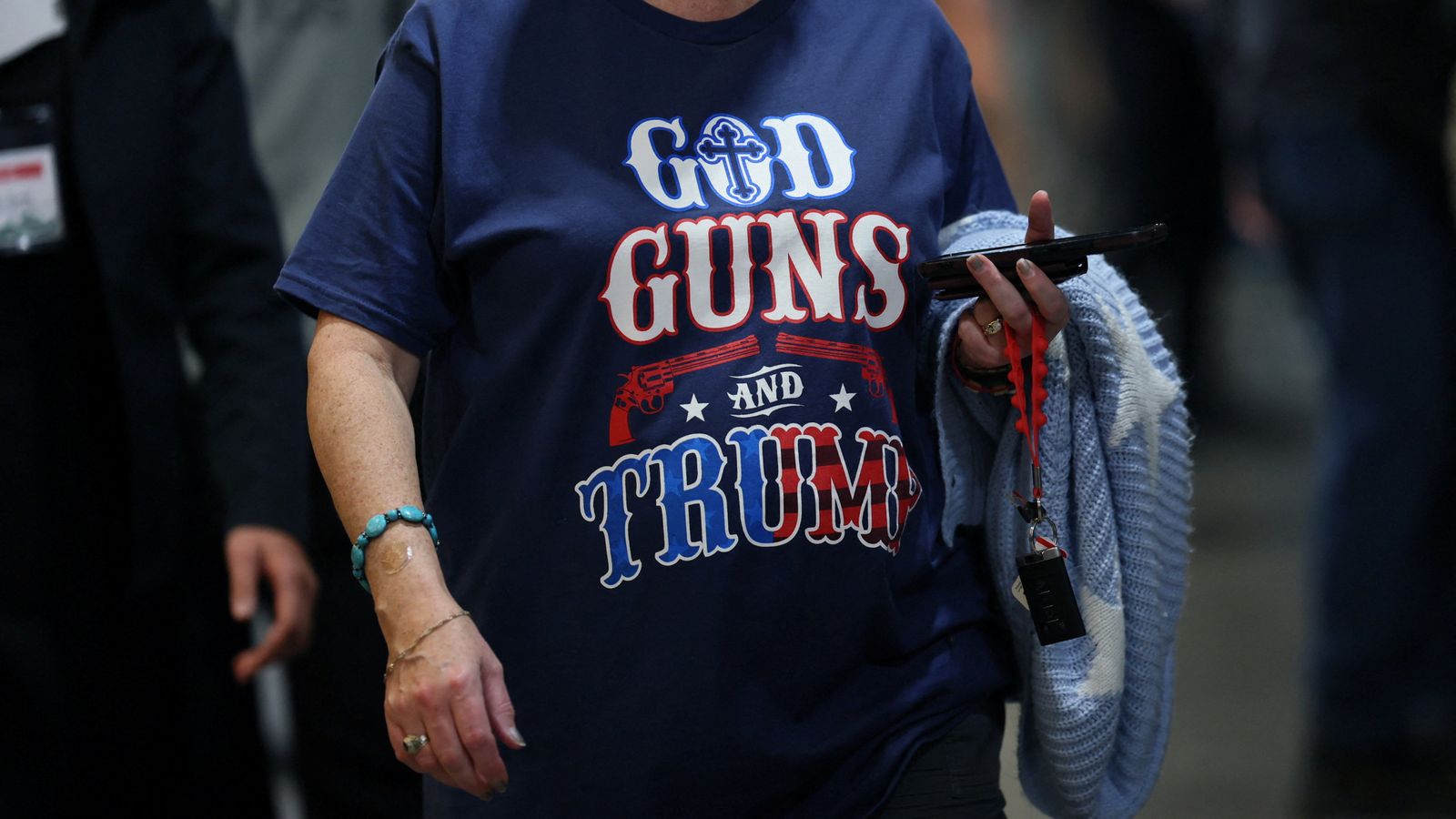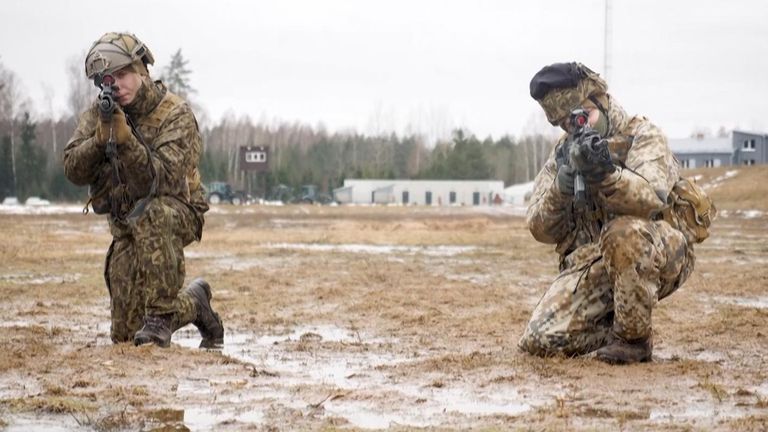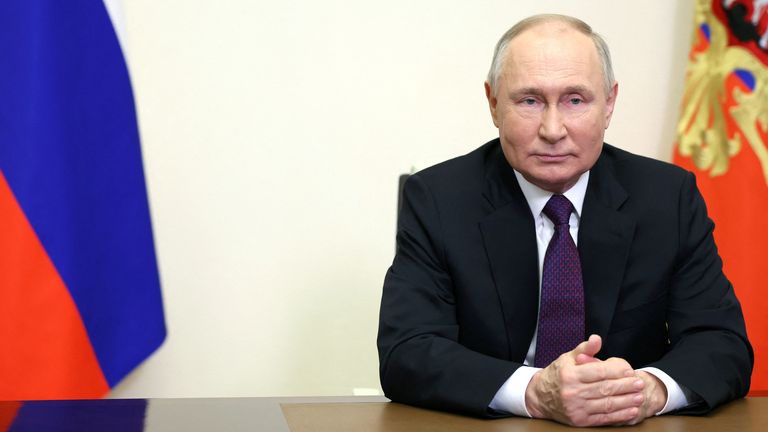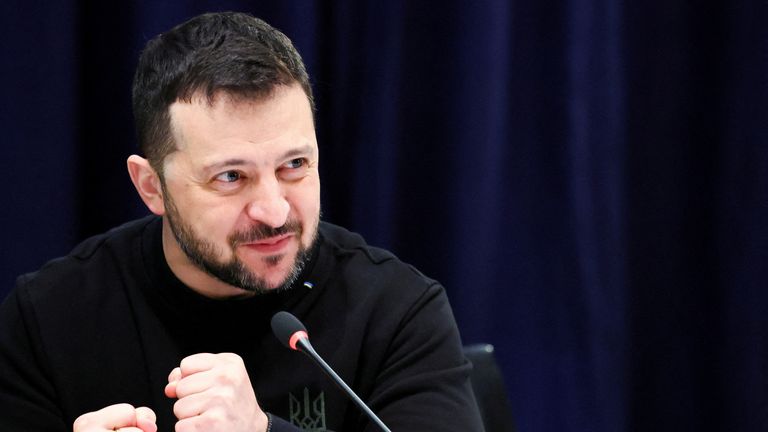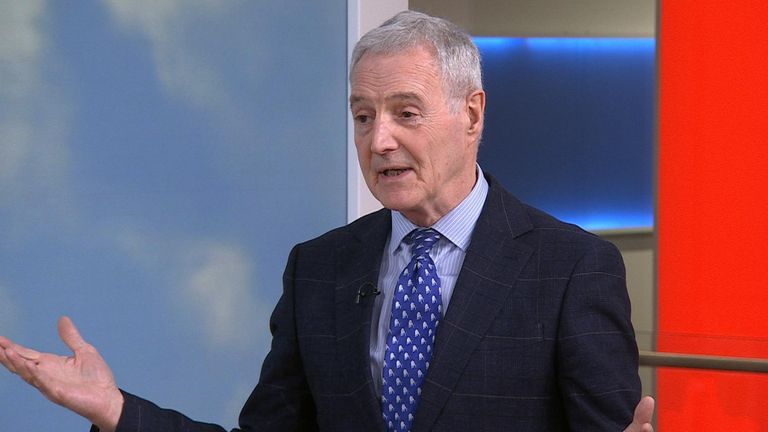The second anniversary of Russia’s invasion of Ukraine comes as America prepares for a crucial election and while funding for a Ukrainian victory remains blocked in a divided Congress.
As our own frontline eyewitness reporting shows, Vladimir Putin has the upper hand.
Western leaders have repeatedly warned that Putin won’t stop at Ukraine given the chance. We are reminded that even on the eve of his invasion two years ago, Putin insisted he would not move into Ukraine.
Ukraine-Russia war latest: Putin ‘may achieve war goal’
So what might happen in the months and years ahead?
Here are two scenarios. Far-fetched? It depends if the rhetoric is accurate.
Scenario one:
It’s March 2025 and a few weeks since Donald Trump was inaugurated as America’s 47th president.
Air Force One has just touched down in Istanbul where Turkey is hosting the ‘Donbas Peace Summit’ where an agreement will be signed by Presidents Putin and Zelenskyy.
At the Topkapi Palace overlooking the Bosporus River, the stage is set for a Trump-brokered ‘peace’ treaty.
The treaty comes three months after Ukraine’s weapon supply ran completely dry following an American refusal to pass funding bills and a breakdown in European unity.
This Istanbul moment is the delivery of President Trump’s campaign pledge to ‘solve the Ukraine war in a day’.
It had taken longer than a day but Zelenskyy had been cornered through a lack of Western weapons.
Closed-door meetings between Trump administration officials and the Kremlin (the contents of which have not been revealed) sealed the deal: Ukraine agreed to cede the whole of the Donbas region of eastern Ukraine to an expanded Russian Federation.
Inside the Topkapi Palace, Zelenskyy first took to the stage, stony-faced and wearing a suit rather than his army fatigues for the first time since the Russian invasion three years earlier.
He signed the document and left the room without acknowledging President Trump who was presiding over the moment.
Minutes later, separately, a beaming President Putin emerged, signed the document and shook the American president’s hand.
Three years later in the spring of 2028, the Russian army which had been massing on Europe’s eastern flank invaded Latvia and Estonia.
The two European nations fell fast.
NATO, abandoned by Trump’s America a year earlier, was unable to defend them.
By the summer of 2029, Chinese President Xi Jinping launches an air and maritime invasion of Taiwan.
Read more from Sky News:
Who is Alexei Navalny’s wife Yulia?
Donald Trump breaks silence on Alexei Navalny’s death
What remains of Russian opposition?
Scenario two:
March 2025. Air Force One landed at Kyiv international airport. Joe Biden, recently re-elected as America’s President, descended the steps of the plane with a rare spring in his careful step.
On the tarmac, Ukraine’s President Zelenskyy, in a suit, embraced him. Some observers said they could see tears in his eyes.
A week earlier, Russian President Putin had withdrawn the last of his forces from eastern Ukraine after a bitter winter battle in which an estimated 40,000 soldiers on both sides had been killed.
Putin’s army had been decimated after a massive increase of weapons from Europe and the United States.
The consequence of a war which had lasted three years was the near-total degradation of the Russian military.
It had been compounded by a surprise thaw in US-China relations and Beijing’s subsequent abandonment of Moscow.
A dramatic shift in the geopolitics of the Middle East also helped to seal Russia’s fate.
Israeli Prime Minister Benjamin Netanyahu’s resignation and subsequent conviction in the 7 October Inquiry of September 2024 had paved the way for the Israeli-Saudi normalisation deal.
This isolated Iran and dented Tehran’s relations with Moscow.
Far-fetched then? Quite possibly. Donald Trump’s first presidency showed that his fickle unpredictability often cancelled out his wild rhetoric.
And a second Biden term is full of profound unknowns. Republican or Democrat, America appears far less engaged than it once was.
In a world of such discombobulating flux, and where global geopolitics is all inextricably linked, don’t rule anything out.
This story originally appeared on Skynews

